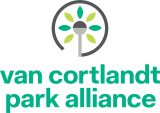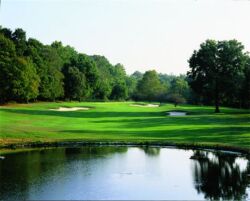Van Cortlandt Park
The John Kieran Nature Trail
John Kieran (1892-1981) was a writer and amateur naturalist who loved Van Cortlandt Park. Born in the Bronx, Kieran attended City College and Fordham University. In 1915, he began his career as a sportswriter for The New York Times. Over the next thirty years, he wrote for various other New York newspapers, and served on the expert panel for the radio show Information, Please. Nature was of the utmost importance to Kieran, especially the swamps and woods of Van Cortlandt Park. He wrote several books and articles including A Natural History of New York City for which he received the John Burroughs Medal in 1960. This work remains an invaluable reference to the city’s wildlife and wilderness during the first part of the 20th century.
In 1694, Jacobus Van Cortlandt (1658-1739) purchased a tract of land. Four years later, he married Frederick Phillipse’s daughter Eva and soon after bought the 76 acres encompassing the site where the Van Cortlandt House still stands. Over a 38-year period, Jacobus, twice mayor of New York City (1710-11 and 1719-20), systematically purchased the entire area of the present-day park, developing it into a productive grain growing and milling operation. The family lived on and farmed the land until 1888 when the city purchased the estate, and the land became the nucleus of Van Cortlandt Park.
The John Keiran Nature Trail, established in 1987, exposes visitors to some of the park’s most scenic natural highlights, beginning with Van Cortlandt Lake. The lake was created during the 1690s when Tibbetts Brook was dammed to power a gristmill. During the American Revolution (1775-1783), Van Cortlandt’s mills ground grain and cut lumber for both the Americans and the British, depending on who controlled the region. In the early 1800s, new mills were built here, and local corn farmers continued to use them through the end of the century.
A special feature here is the connecting Old Putnam Trail, a former railroad. Two tracks of the New York Central Railroad’s Putnam Division once ran here, as evidenced by the double width railroad bridge. From 1881 until 1958, the line carried passengers and freight between High Bridge in the Bronx and Brewster, New York. Freight continued to be hauled on these tracks occasionally—and very slowly—until 1981. A secondary route carried passengers from High Bridge to Getty Square in Yonkers from 1888 until 1943. Those tracks ran along the edge of the Parade Ground and north through the western edge of the park. What remains of the Van Cortlandt Station can still be seen just south of the lake. Interesting wildlife like white-tailed deer (Odocoileus virginianus) and coyote (Canis latrans) often made their way into the park along this man-made corridor.
The Parade Ground, at marker 14 along the trail, was once a principal settlement of the Native Americans who lived in this area. The Lenape people had their main planting fields here, and the Van Cortlandts used the area for the same purpose. In 1890, the field was re-graded for use as a training area for Squadron A of the National Guard. The site was used for war games and polo matches, especially in 1917-1918 when the U.S. Army encamped here to train troops for World War I. Today, the Parade Ground is a major recreation area for baseball, cricket, soccer and cross-country running meets.
Near marker 15, visitors can see 13 stone pillars standing in the woods. The New York Central Railroad placed the different types of stone here to determine which would be most durable for use as the façade of Grand Central Terminal in Manhattan. They chose the stone that was the cheapest to transport along their rail lines: Indiana limestone (the two pillars on the far right).
Marker 16 is the site of a cemetery from the 1700s. Prominent families from the village of Kingsbridge were buried here, including the Ackermans, Berriens, Betts, and Tippetts. The grave markers are now gone and a young forest has grown up in their place.
The John Kieran Nature Trail offers visitors a wonderful opportunity to view the tremendous variety of plant and animal life in the park. The trail loops through freshwater wetlands where mallard (Anas platyrhynchos) and wood ducks (Ax sponsa) can be found by the lake, red-winged blackbirds (Agelaius phoeniceus) and great egrets (Ardea alba) flock amongst the common reed (Phragmites australis). Different species of chipmunks and squirrels dart through New York fern (Thelypteris noveboracensis) and Virginia knotweed (Polygonum virginiana). Other plants to note are arrow arum (Peltandra virginica), duckweed (Lemna), buttonbush (Cephalanthus occidentalis), and one particularly special tree, the gray birch (Betula populifolia). This species can take on an odd appearance, as it does here, with a five-trunk base. Very early in the gray birch’s life, it was damaged, perhaps by a hungry rabbit or a brushfire. The tree managed to survive by sprouting the several trunks that matured into the tree that stands today. Some interesting insects that inhabit this area are the birch leaf miner (Fenusa pusilla), waterstrider (Gerris remigis ), and a variety of brightly colored dragonflies (Odonata).
Check out your park's Vital Signs
Clean & Safe
Green & Resilient
Empowered & Engaged Users
Share your feedback or learn more about how this park is part of a
Vital Park System
Downloads
Links
Contacts
Van Cortlandt Park Alliance: (718) 601-1460
Mosholu Golf Center and Driving Range: (718) 655-9164
Park Enforcement Patrol: (718) 430-1815
Special Events Permits: (718) 430-1848
Sports Permits: (718) 430-1840
Tennis Permits: (718) 430-1848
Riverdale Equestrian Centre: (718) 548-4848
Urban Park Rangers: (718) 548-0912
Van Cortlandt Golf Course: (718) 543-4595
Van Cortlandt House Museum: (718) 543-3344
Van Cortlandt Pool: (718) 548-2415
Friends of Van Cortlandt Park: (718) 601-1460
Van Cortlandt Nature Center: (718) 548-0912












